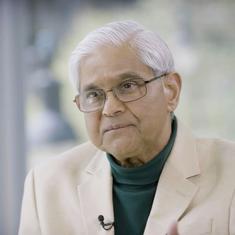Guy Ritchie’s King Arthur: Legend of the Sword traverses well-trodden territory. The legends surrounding the English ruler have been showcased many times before, most recently in King Arthur (2004). To distinguish his film from the rest, Ritchie, who co-wrote the screenplay with Lionel Wigram and Joby Harold, reimagines the mythical king as a hero plucked out of gangster films Lock, Stock and Two Smoking Barrels (1998) and Snatch (2000) and plonked in medieval England.
Developed as the first entry in a planned franchise, much of the film’s over-extended 126 minutes is devoted to setting up the narrative universe. It is a given that King Arthur (Charlie Hunnam) will pull the Excalibur sword from the stone, and will sit with his knights at a round table. In between these familiar events from the classic tales are underlit and CGI-heavy action sequences in which it is often difficult to tell what is exactly going on.
A pre-credits sequence sets up the plot and introduces the best character. Jude Law understands exactly what kind of film he is in, and turns up the camp several notches. Law plays Vortigern, who betrays his brother Uther Pendragon (Eric Bana), to usurp the throne, thereby creating the opposing force, Arthur, who will take him down. Arthur transitions from the reluctant hero to one who is sure of his destiny, but Hunnam plays the character much too seriously to make the journey convincing or entertaining.
What little cheer the film has is reserved for the rapidly edited action scenes reminiscent of Ritchie’s style, which was developed in Lock, Stock and Two Smoking Barrels (1998), perfected in Snatch (2000) and reached its sell-by date in the two Sherlock Holmes films. At its best, Ritchie’s style passes for watchable flash. At its worst, it is King Arthur: Legend of the Sword.










